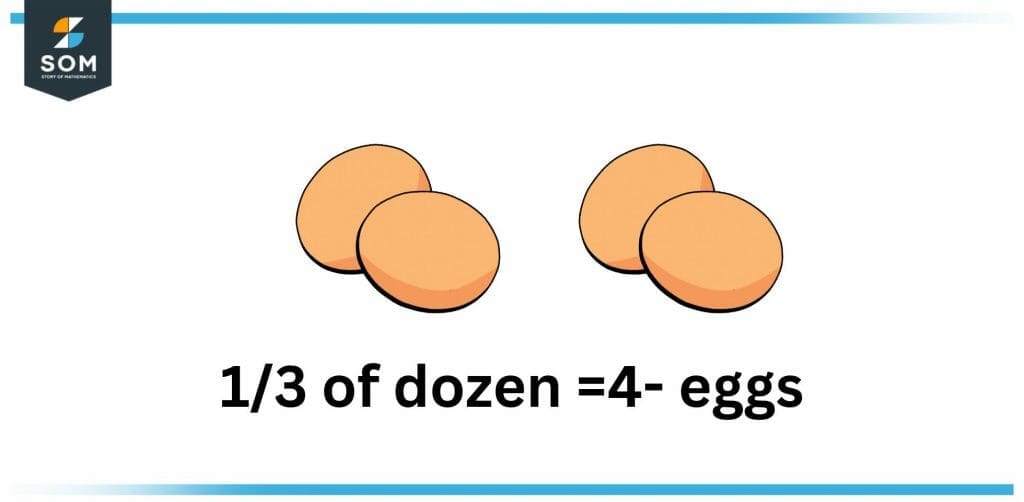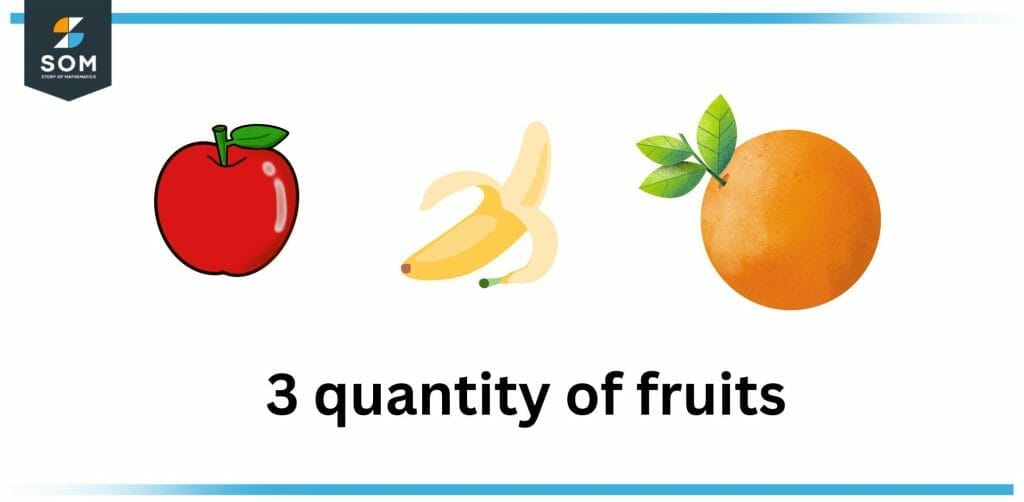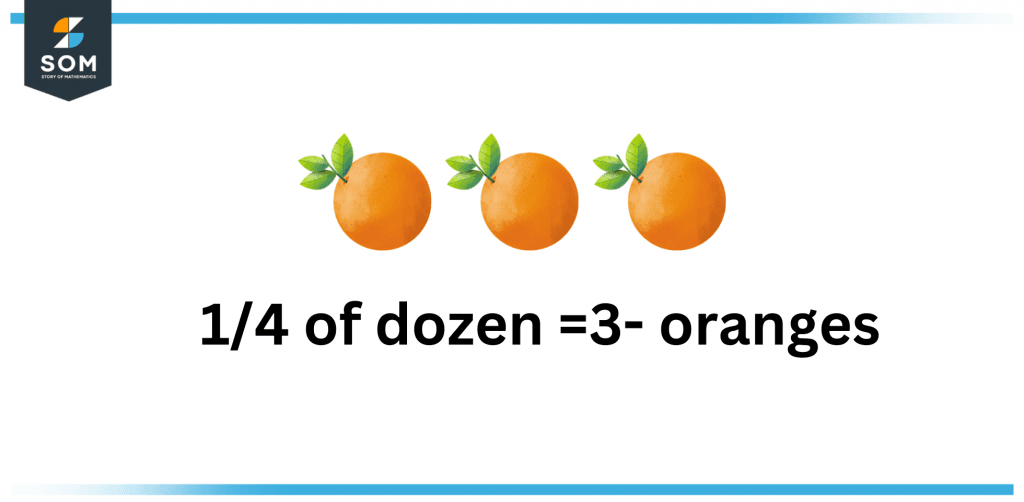JUMP TO TOPIC
Quantity|Definition & Meaning
Definition
Quantity is the numerical value representing the amount of something and answering the question of how many or how much. This provides a common scale for the measurement and comparison of similar quantities. For example, the number of students in a classroom is a quantity answering the question of how many.
A quantity refers to a measurable characteristic of an item or set of items. We can express comparisons between quantities by saying that one is greater than, less than, or equal to another. Every branch of mathematics and science relies on the idea of quantity.
When analyzing the lengths of two line segments that are not equal to each other, one may say that the length of the longer segment is bigger in quantity. Your hand can’t handle the heat of touching a hot stove because the burner generates far more heat than your hand can tolerate.

Figure 1: One-third of a dozen
Quantity, in its simplest definition, is indeed the amount or even the number of anything. Quantity can also be thought of as a number, amount, or a way to quantify something. Amount-wise questions are resolved by this.
Quantities can also be interpreted in the form of numbers; for instance, this book has 55 pages, or the container has an ‘x’ quantity or the number of black pens. Quantities can indeed be expressed numerically as distance, time, mass, etc.
Denoting Quantities
A quantity in a mathematical equation is both the integer or variable, along with any additional numbers or variables that can be combined algebraically. There will usually be some sort of unit associated with these values.
For instance, there are 4 quantities displayed in the equation x + 8 = 15: 8, 16, x, and the sum of x and 8 which can be written as x + 6.
Quantity Examples of Various Kinds
One day, Alice decided to buy some sugar, so she traveled to a nearby village.
Let’s say she bought 20 packs of sugar and discovered something was off. On the other hand, she visited a nearby store and had it measured. She measured out 16 packs of sugar and snapped a picture of the amount. Since 20 minus 16 is equal to 4 packets of sugar. Thus, the discrepancy is there. The result was a profit of four sugar packets for the shop owner.
She returned to the town the following day with evidence of the forgery he had committed the day before. Once he realized how much sugar had been stolen, he apologized and vowed never to do such a thing again. In this case, the incorrect weight would be 20 packets of sugar, while the correct weight would be 16.
Consider another example: David once made a purchase of rice from Shopper’s Street Supermarket without first clarifying the quantity, then paid for it. His mother inquired about the rice’s weight as soon as he returned home. Here, she is referring to the rice measurement in terms of weight. The quantity of rice that David purchased from the Shopper’s Street Supermarket is denoted here by weight.

Figure 2: Three quantity of fruits
Quantities can be qualitative or approximate as well: Suppose that two friends, Luther and William, went to a new cafe called Sweetie Pie Cafe and found it to be a bright and airy location. They asked for coffee but noticed that it was a bit too strong for their tastes and the waiter forgot to bring the sugar. Luther had to ask the waiter to bring “a handful” of sugar.

Figure 3: One-fourth of a dozen
Mathematical Quantity
When describing quantities in mathematics, we typically refrain from using units and instead only refer to the magnitude or number of the quantity. This is so because the units are unchanging and the qualities and relations we are studying and expressing in mathematics are abstract.
If a question asks for a number of quantity x in the expression x + 1 = 5, for instance, the answer is always 4, regardless no matter whether the values in the equations stand for money, eggs, or percentages. When working without units, it’s crucial that we pay close attention to the dimensions which are connected to each quantity.
Types of Quantities
The two types of quantities are scalar and vector.
The Definition of a Scalar Quantity
Scalar quantities are the quantities of physical space and time that only have one dimension, magnitude. A magnitude or even a numerical value is sufficient to provide a complete description of it. The scalar amount does not include directions.
Examples of Scalar Quantity
Scalar quantities include mass, time, volume, and so on.
Definition of Vector Quantity
Vector quantities are physical quantities that have distinct magnitude and direction definitions. For example, suppose a man is riding a bike at 30 km/hr in the northeast direction. Then, as we can see, we required two things to define the velocity: the magnitude of a velocity as well as its direction. As a result, it denotes a vector quantity.
Examples of Vector Quantity
Vector quantities include weight, force, the speed of light, and so on.
Why Quantity is Important in Mathematics?
A fundamental idea in mathematics called quantity is essential to many fields of study as well as practical applications. Quantity is a mathematical term that describes the size or quantity of an object and is used to represent both concrete and abstract concepts.
Quantity is a tool used in mathematics for problem-solving, developing mathematical models, and making predictions about the relationships between various quantities.
The capability to execute mathematical computations on quantities is one of the main advantages of employing quantity in mathematics. This enables data manipulation and analysis, enabling conclusions to be drawn and forecasts to be made using mathematical models.
For instance, position, velocity, or acceleration are used in physics to describe the motion of things and to anticipate how they will behave. The analysis of quantity in math is important because it creates the basis for a profound comprehension of mathematical principles and procedures, in addition to enabling one to execute operations on quantities.
For instance, studying calculus, which is used to investigate rates of change as well as optimization issues, requires a solid understanding of quantity. The use of quantity in practical applications is another crucial component of quantity in mathematics.
Mathematical models are used in many disciplines, including engineering, finance, as well as the natural sciences, to describe and analyze phenomena that occur in the actual world. Success in these professions depends on one’s capacity to manipulate numerical data and make predictions using mathematical models.
In summary, the analysis of quantity in math is significant because it offers a way to compare and describe both concrete and abstract objects mathematically, permits data manipulation and analysis, lays the groundwork for a thorough understanding of mathematical ideas and procedures, and is necessary for success in so many real-world applications.
A Numerical Example of Quantity
What might happen if 1200 glasses from company B were combined with 3560 glasses from company A?
Solution
The result of adding up 3560 by 1200 is 4760. Imagine that you find a container at the Sky Shop that is filled with 4760 glasses from companies A and B. In this case, 4760 glasses represent the total number of glasses from companies A and B in the container.
Thus, you can comprehend quantity in this manner. This idea can be related to things you see around you. Math becomes simpler to understand in this way.
All images were created with GeoGebra.
